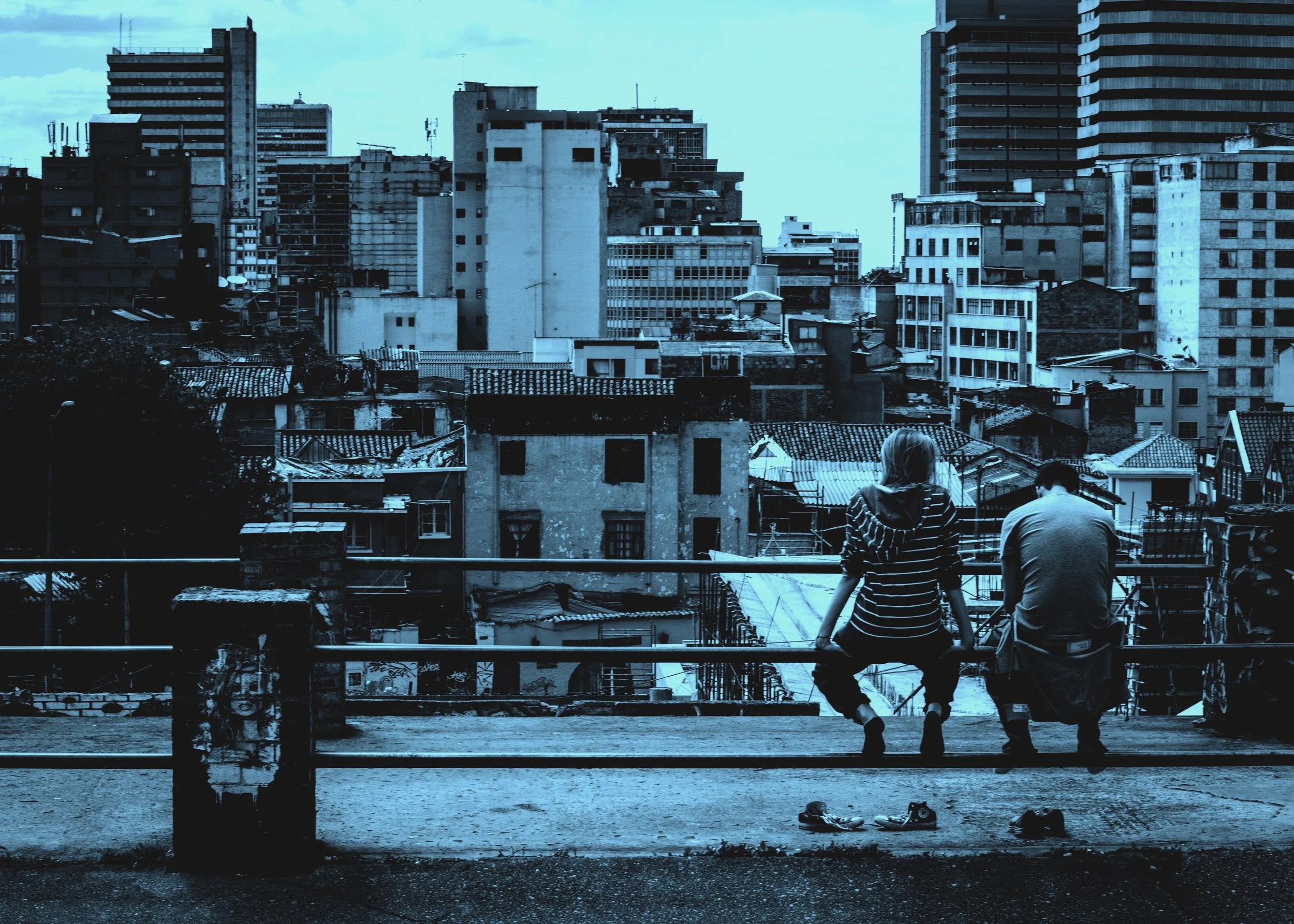The Existential Crisis Edition
Editor's Note: What a difference a month makes. I've started drafting a new edition of the faiV several times over the last six weeks, but events kept overwhelming the moment and I put it off again. Now it seems that events have overwhelmed everything. And so, here is a special edition of the faiV with few links and only two thoughts around one central theme: the existential crisis for microfinance globally.
- Tim Ogden
1. Microfinance in the US
Yes there is microfinance in the US. And yes, it is very different from microfinance in the rest of the world. One big difference: in the US there is no pretense that you can make meaningful business loans at market rates to excluded communities and make a reasonable profit. In rough terms, the minimum loan size for lenders to break even just on the loan is $35,000. Include operational costs, and it’s probably closer to $100,000. I won't give you any guesses on which kinds of small business owners are more likely to be looking for loans in that size range. To do business in that landscape requires a special kind of financial institution which in the US is called a Community Development Financial Institution (CDFI), which can raise grant capital and concessionary debt and doesn't have to be profit maximizing.
I also won't give you any guesses on the Venn overlap between the kinds of businesses with the fewest days of cash on hand and the kinds of businesses most likely to have seen their revenues go to zero as lockdowns and shelter-in-place orders proliferate.
What does it add up to? The most vulnerable businesses—the hair salons, the food trucks, the cleaning services, the in-home daycares, the small ethnic restaurants—are owned by the most vulnerable people—entrepreneurs of color, women, immigrants—which are served by the most vulnerable institutions.
If this crisis isn't going to completely devastate these communities and the financial institutions that serve them , urgent and specific action needs to be taken. It probably won't surprise you at all to know that the standard "small business rescue" plans don't ever reach these borrowers or the CDFIs that serve them—unless there are programs targeted specifically to them.
For the last few days I've been working feverishly with a bunch of folks who care about CDFIs and microlending in the United States on what an actually workable plan might be given the circumstances.
It's a two-prong approach.
First, CDFIs have made a big chunk of loans that cannot perform, at least not any time soon. The businesses are closed or essentially closed and lack the cash to survive zero revenue for more than two weeks. Most of the plans out there are about extending additional loans to small businesses. That won't work here. These borrowers don't need more credit—that will only put them deeper in a hole and make it harder for them to get back on their feet later. What they need is an immediate reprieve from payments and deferral of those loans until after the economy starts growing again. That means they could suspend their businesses, not ruin their credit and might even be able to hang on to some of their key business assets. The only way to provide the relief those businesses need, without making the CDFIs who lend to them insolvent, is for those loans to be bought and taken off the books of the CDFIs. It's a lot like the strategy to deal with the Savings and Loan crisis: create a "bad bank" to take on all the riskiest loans and work them out slowly, over the long term. That allows the lenders to focus their energies not just on surviving (by extracting as much as they can from the borrowers to keep themselves solvent) but on helping the businesses that can survive. That "bad bank" has to be funded by government—the only source of capital that can take both the kind of risk the long-term perspective needed to do this. As a rough estimate, it would take less than $1 billion to buy all of the microloans (e.g. $100K or less) in the worst hit industries from all of the CDFIs in the country.
The second prong is injecting more capital into the CDFIs so that they have balance sheets healthy enough to make new loans the minute that recovery is possible. The easiest way to accomplish that is to have another pool of public, private and philanthropic capital that buys a bunch more of the loans from the CDFIs. That provides the CDFIs with the liquidity they need to keep lending, and it gives them the ability to be more flexible in rescheduling loans and offering help to borrowers. But if the first prong doesn't happen, then all that other capital is going to have to go into keeping the CDFIs solvent—and it probably still won't be enough. That will mean another lost decade, at least, for the poorest parts of the United States.
In summary, something like this is absolutely necessary. But it has to be part of whatever government bailout and stimulus package is put together. Because if it's not specifically there, then any money for small business rescues is going to go to the bigger banks and the bigger businesses and those left behind will be the same communities and lenders who have always been left behind.
If you're in any position to advocate for something like this with the powers-that-be, let me know. I can send you a package of materials that lays out the plan, and connect you to a group of CDFI industry leaders who agree that this is the way to go.
2. Global Microfinance
As I said, I've been pretty consumed for the last week paying attention to the potential apocalypse of microfinance in the US. But nagging at the back of my mind has been the fact that the apocalypse for global microfinance is only a few weeks behind.
I'm honestly starting to panic about how little panic I'm seeing. Is there anyone out there who honestly thinks that the average MFI can survive what's coming? Even before COVID-19 arrives in these countries, the coming devastation should be obvious.
Let's just think for a moment about the end of remittances. The migrant workers who aren't being sent home aren't working. Or about the shutdown of garment factories in Bangladesh or flower farms in Ethiopia. Or the end of tourism revenue in Latin America and the Caribbean.
Think about what happens when social distancing comes to the developing world. Think about the group meetings. Think about micro-businesses and what they do. Think about all the moto-taxi and rickshaw drivers. All of the seamstresses and bakers and fruit vendors. I could go on and on.
I'm very curious to hear from anyone who is starting to work on what it will take for the global microfinance industry to survive. At a minimum, it's going to provide an opportunity for all those "social investors" to prove whether they meant any of the rhetoric. I don't have a plan but I do have an idea: everyone claiming to be a social investor in microfinance should immediately turn all their debt capital to 0% interest and suspend any payments for 12 months. And they should be preparing to provide more capital and helping MFIs merge.
What role for the development banks? At a first approximation, I would say that the future of the microfinance industry in each region is going to largely depend on what those banks do to keep the best MFIs alive through the crisis, and recapitalize them after.
I also wonder a lot about the fate of the new digital lenders. Does anyone think that Tala or Branch can survive a major payment crisis? Or that borrowers will prioritize paying those loans over ones from local lenders? Will governments simply decree that all digital loans from non-national lenders are null and void? The fate of digital finance companies closely tied to telecoms firms is harder to think about. The telecom firms are likely to be among the few to prosper, provided that they aren't too leveraged themselves (and I expect that few are, and if so would be the first bailed out by national governments). I would guess we'll see an incredible amount of consolidation in digital finance, and we may just finally see the push to get past the cash in/cash out model of mobile money.
But I'm very interested in your thoughts on reasonable plans to rescue microfinance institutions no matter where they are. If you're as worried as I am, get in touch and tell me what you think is going to happen and what can be done. If you're not as worried as I am, get in touch and tell me why not.




